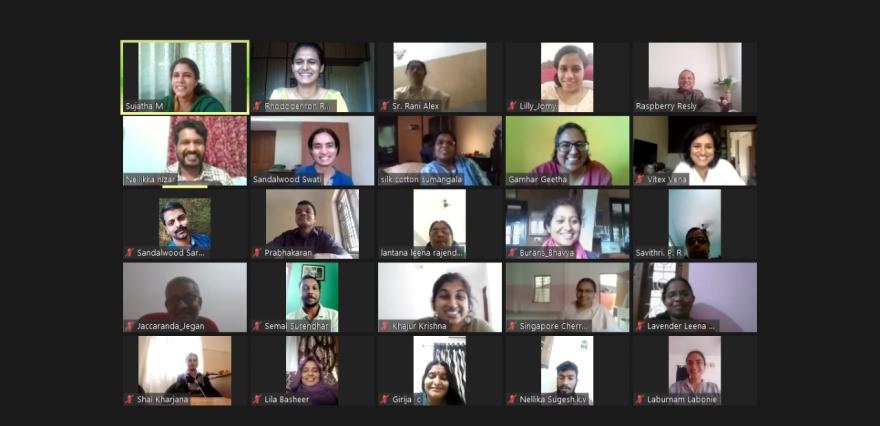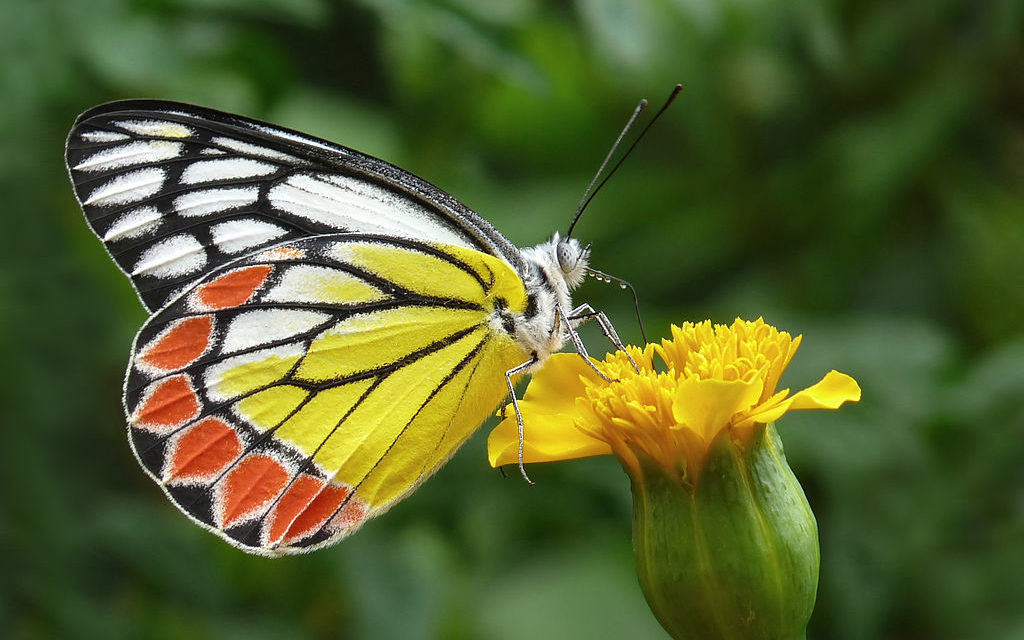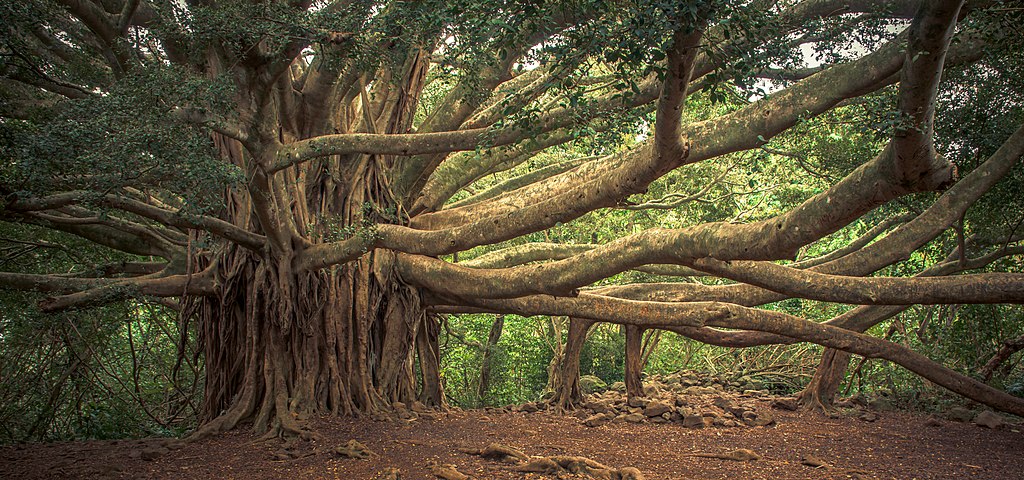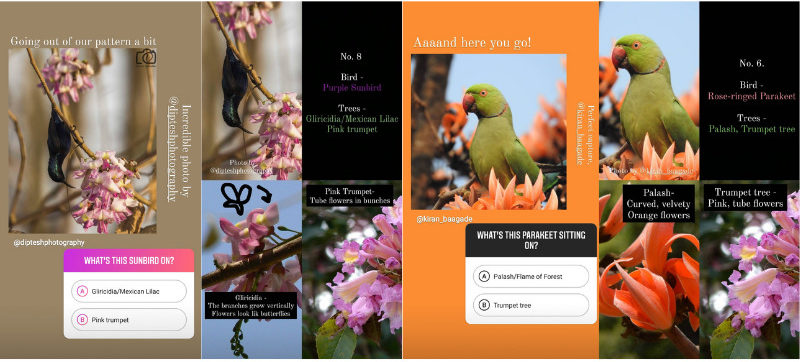Dear SeasonWatch supporter,
We dedicate this newsletter to the memory of Sridevi teacher who passed away in May due to Covid-19. She was one of the earliest members of the SeasonWatch community and was with us since the very beginning of the programme. She was an inspiration to many and most happy to offer her knowledge to others. Those who knew her, remember her kind and friendly nature, and her curious approach to learning. She will truly be missed.
Many teachers from our SeasonWatch community have served as front-line workforce during the pandemic. They have also had to learn new ways and technologies to adapt to online teaching. We are grateful for the contributions they are making within their communities. Despite the constraints on their time, some of our teachers met us for a two-day workshop in May. We got together to explore the SeasonWatch database, using the new website, and also look at a nature learning pedagogy approach to bring in elements of nature into the everyday classroom. In this newsletter, we bring you some updates from this workshop.
Sincerely,
SeasonWatch team
A Meeting with our teachers

First online meeting of SeasonWatch teachers and facilitators
SeasonWatch partners, supporters, and participating schools and individuals, are based in various places in the country. Over the last couple of years, we have met some of our enthusiastic contributors in person, in Bangalore, for a two-day meeting. The goal of these interactions has been to meet, share and learn from each other’s experiences. Due to the ongoing pandemic, this year we organized an online meeting on 8 & 22 May. First meeting was attended by 36 of us, including six facilitators. The second meeting was attended by 22 of us including five facilitators. This meeting was co-organized with the Nature Classrooms team. During the first meeting, we had sessions on using the new SeasonWatch website to explore the database and concepts of nature learning pedagogy with hands-on activities. The second meeting delved deeper into the nature learning framework developed by the Nature Classrooms team. Below are a few highlights from this meeting.
Tree-watching during the pandemic
Due to the ongoing pandemic and school campuses being shut, most teachers found it difficult to continue watching trees in the last year. Many teachers were given additional duties during the pandemic, while others faced a variety to challenges related to accessibility of outdoor spaces and internet. Prabhakaran sir was more fortunate and was able to observe trees safely in his own backyard. Sugesh sir was a covid volunteer and had several responsibilities including contact tracing and delivering food to affected families, and couldn’t find time to watch trees regularly. Resley sir, who lives far away from his school and the trees he monitors, could not make observations regularly. Others too spoke about being unable to go outdoors and some reported poor network. With much of school work shifting online and the number of digital devices being restricted, teachers spoke of the difficulties students were facing to access mobile phones, even for their regular classes. Sujatha teacher said that in her school there are restrictions on online use by students. In the past year, she also has to spend time learning new ways to teach online classes and has been unable to find time to watch trees due to her busy schedule.
Adopting nature learning in classrooms

A cattle egret riding a buffalo to pick up some parasites for a meal. Photo by Dr. Raju Kasambe via Wikimedia Commons.
Primary school EVS curriculum often explains concepts through narratives that are primarily human-centered. Can effective nature learning happen by expanding this information to include other organisms? This session, led by the Nature Classrooms (NC) team brought new ideas on integrating the primary level EVS topics with nature learning. One of the lessons taught in primary school EVS is called ‘Clean habits’. The aim of this lesson is to teach young children the importance of cleanliness and daily habits that maintain good hygiene. The nature classrooms team demonstrated that this lesson on cleanliness, which typically includes examples from people’s lives, can also be taught incorporating examples from the animal kingdom, such as mud-bathing by birds and the outsourcing of parasite removal on buffaloes by mynas. Later the teachers were given an exercise to adapt other topic or chapter from the EVS textbook. Many teachers came up with examples from the animal kingdom and linking them to topics such ‘We need a house’, ‘Portions of a house’, and ‘Our food habits’. Surendhar sir thought of using the example of rodents and how they use a part of their house to store seeds, and how ants use compartments within their nest to tend to the young ones. Sujatha teacher worked with the topic of food habits. She thought of using a role play activity where students act out different animals in a forest and have to choose from a buffet of food offered to them to explore different types of food eaten by different animals.
Nature learning pedagogy
Nature Classrooms teams emphasized on inquiry-based learning approach. They enacted an entertaining skit to talk about inclusion of the learner in the process of learning, co-creation of knowledge between a learner and teacher, providing space to the learner to construct and organize her knowledge through an active discussion. Through multiple sessions, the team also put forth a number of interesting ideas about the theory of nature-learning. They encouraged the teachers to ask – why did they think nature learning was at all important? Teachers responded saying as part of nature ourselves, it is important to understand nature. Others suggested that it is important to study nature for our own survival, that nature learning provided opportunity for being inquisitive and that nature served as a classroom and teacher too. Several teachers agreed (and provided instances of) that children who were unable to perform well in the academic system of memorisation and exams, often got tremendous benefits from being outdoors and inquisitive about nature. Vena Kapoor led this session and highlighted the increasing scientific evidence supporting the idea that spending time in nature benefits children and adults alike in their physical and mental well-being, increase in creative play, and better understanding of concepts.
Ethical dilemmas faced by educators

Common Jezebel by Jeevan Jose via Wikimedia Commons
Educators may often come across situations in their teaching life that pose moral or ethical dilemmas. How do teachers approach situations where students interact with nature, and when ‘right’ and ‘wrong’ is not especially clear? What can educators do to make these instances more conducive to nature learning? Two scenarios were put forth before the teachers, and they were asked to introspect on their own reactions to student behaviour. In the first scenario, a student on a nature walk throws a stone at a butterfly. The teachers were asked whether they found this problematic at all, and what they would do in such a situation. While several stories on observing, appreciating and rearing butterflies in schools came up in response to this scenario, only Sujatha teacher had an opinion that the student could be advised against throwing a stone at the butterfly (or any other living creature for that matter). Roshni Ravi, the session facilitator, pointed out instances where harming living things is often considered acceptable (e.g. for scientific studies) and asked teachers to introspect on why that was considered acceptable, but the instance in this scenario was not.
In the second scenario, a student doing SeasonWatch feels extremely sad after her tree is loped to make way for an electric wire. Teachers were asked how they would help the student process her feelings and develop a general conversation about tree health. Shai sir and Jayashri teacher both approached the situation by explaining the practicality of the issue to the student, and that lopping branches of trees near wires may be inevitable to ensure the well-being of other living beings. The take away from this session was that often ethical dilemmas are difficult to resolve and that childrens’ feelings for nature must be acknowledged and handled with consideration.
Spin-a-yarn

Banyan tree by Thomas via Wikimedia Commons
This was an impromptu group activity where we all went by turn and added one line each to build a story on a Banyan tree. This was great fun but doing this online caused a little bit of confusion as a couple of people were unable to hear some of the lines. Below is a mildly edited version of the story.
“Once upon a time, in a village far far away, there was a very old Banyan tree. In that tree lived a small spider named Kuttu. Kuttu usually hung around a bunch of ripe red fruits. Kuttu has a friend – a small barbet – who came to eat the fruits and call out tuk-tuk-tuk. One day a parakeet came to the tree and asked Kuttu, ‘O Kuttu, where are your flowers?’. But before Kuttu could answer, the parakeet attacked Kuttu. Kuttu fell down from the tree, dead. Then the parakeet called a family meeting in the Banyan tree. The whole parakeet family spent days eating the delicious ripe fruits and enjoying their extended meal. One morning a teacher came to the tree with her students. They watched this tree for hours, looking at it’s leaves, flowers, and fruits. They were happy to see so many birds in their tree. Just then, a monkey came to the tree and declared that now he owned the tree and asked everyone to leave. He shook the tree very hard so that all the parakeets flew away. The ripe red fruits started falling in thousands. This red rain fell on Kuttu, who was under the tree, and made her come alive. Kuttu quickly climbed the tree and claimed her old home. The monkey was left with no choice but to cooperate with the rightful owner of the tree and leave. As the teacher was leaving with her students, she got a phone call informing her that a lockdown was announced in her district due to the Covid pandemic. The teacher and her students decided to spend their lockdown days happily ever after in the tree.”
Follow us on social media

Have you played our recent ‘What’s that bird sitting on?’ quiz on Instagram? Follow our social media (Instagram Facebook Twitter) handles to learn about trees through fun activities and trivia.





